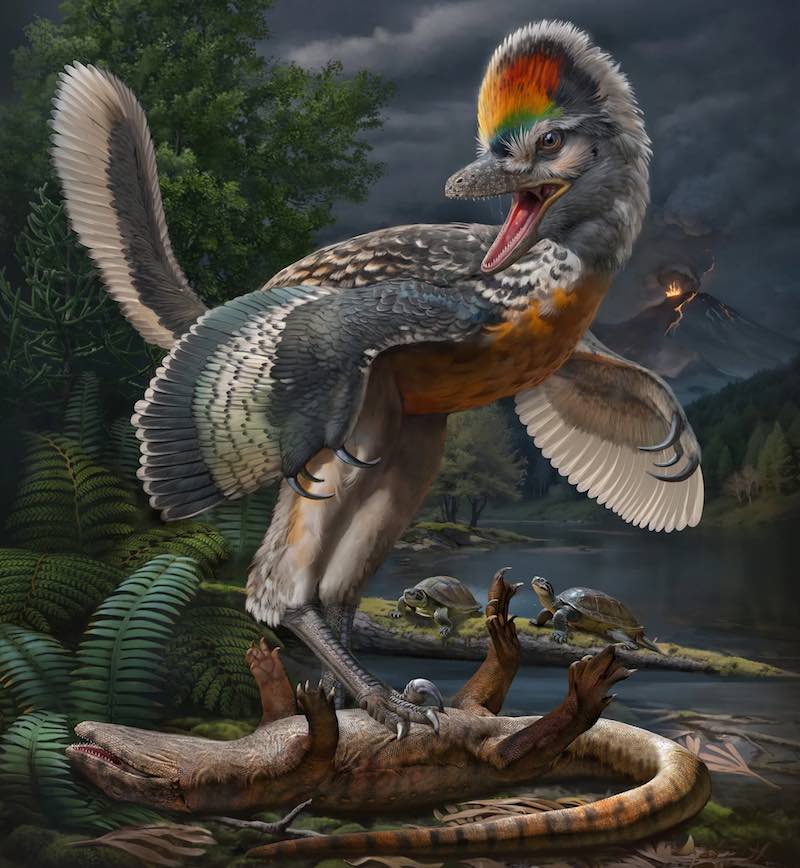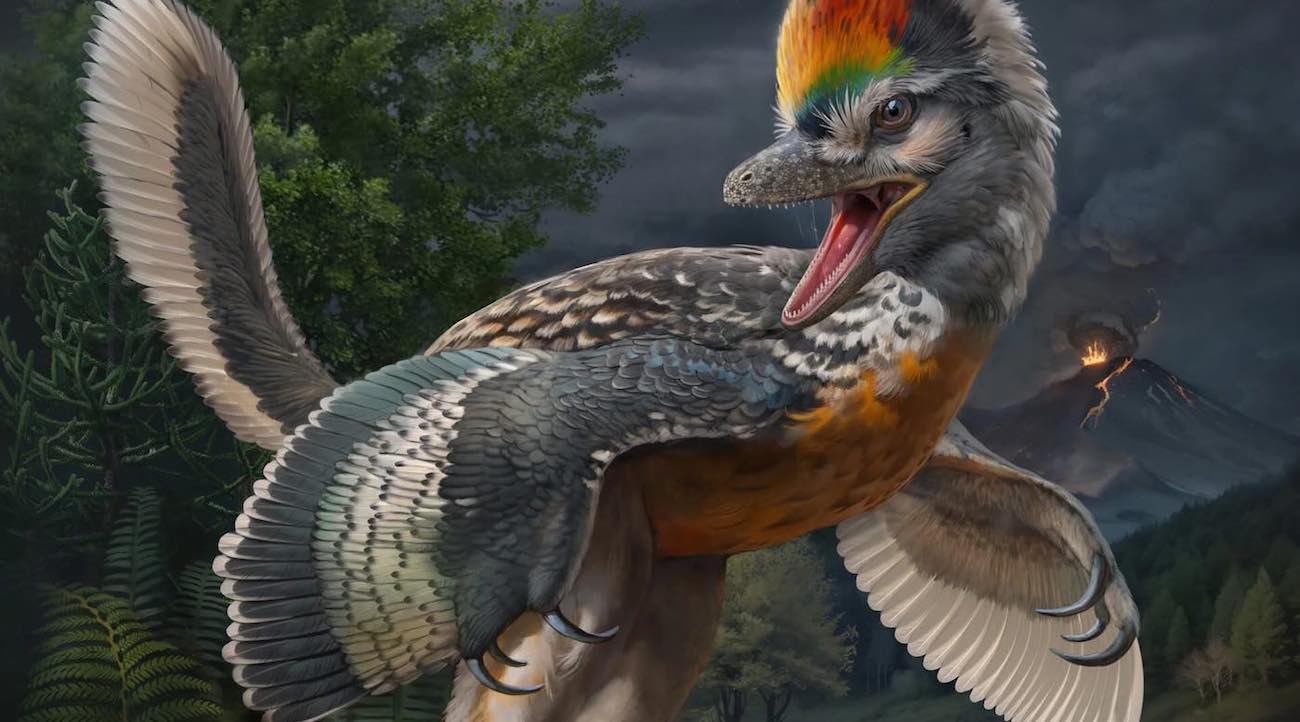
China introduced many things to the world—paper, fireworks, gunpowder, zippers, but it’s also in China’s soils that the greatest scientific advancement in paleontology was discovered—that dinosaurs became birds.
China has produced more feathered or gliding dinosaurs, or those that share intimate similarities with flightless birds like emu, than any other country, including this one: a new 150-million-year-old avialan theropod found in Zhenghe County in Fujian Province.
Chinese scientists say the previously unknown species was a “high-speed runner” who lived in a “swamp-like” environment during the Jurassic Period.
They said the new species, named Fujianvenator prodigiosus, or (Fujian hunter) exhibits a strange mixture of features shared with other predecessors of today’s birds.
“Our comparative analyses show that marked changes in body plan occurred along the early avialan line, which is largely driven by the forelimb, eventually giving rise to the typical bird limb proportion,” said study corresponding author Dr. Wang Min, of the Chinese Academy of Sciences in Beijing.
“However, Fujianvenator is an odd species that diverged from this main trajectory and evolved bizarre hindlimb architecture.”
Dr. Wang said the surprisingly elongated lower leg and other features suggest that Fujianvenator lived in a “swamp-like” environment and was a quick runner or a long-legged wader, representing a previously unknown version of early birds.
MORE FOSSILIZED NEWS:Scientists Unearth Africa’s Oldest Known Dinosaur, Filling a Critical Gap in the Fossil Record
A Jurassic-era wading bird—fascinating. Other aquatic bird/dinos have been found in China, like the Natoventator, which was described by one paleontologist as a kind of Cretaceous cormorant.
The researchers say that between the Late Jurassic and Early Cretaceous period, southeastern China underwent intensive tectonic activities, resulting in the unusual landscape where Fujianvenator was found.
MORE COOL DINOS: Dinosaur With Biggest Claws Ever Discovered Was ‘Edward Scissorhands on Speed’ Scientists Say
“The extraordinary diversity, unique vertebrate composition, and paleoenvironment strongly indicate that this locality documents a terrestrial fauna, which we named the Zhenghe Fauna,” said study author Dr. Zhou Zhonghe.
The team says their findings, published in the journal Science, opens a “new window” into the Late Jurassic terrestrial ecosystem of the planet, and they plan to continue their exploration of Zhenghe and nearby areas.
SHARE This Jurassic Wading Bird Ancestor With Your Friends…




















